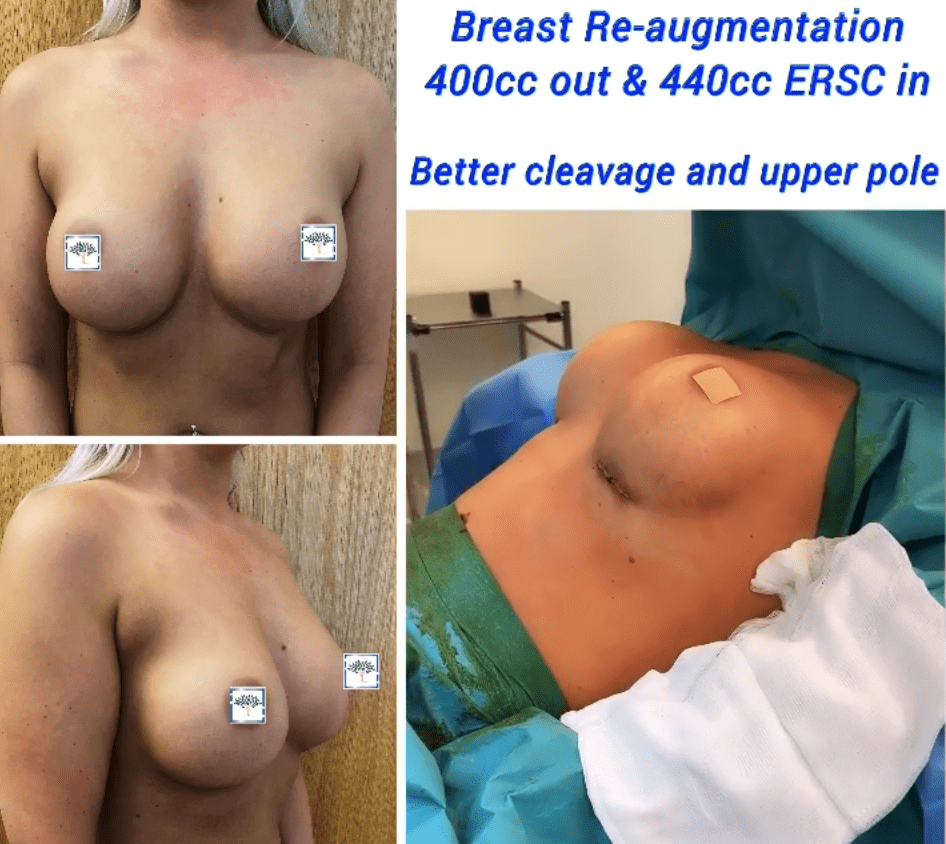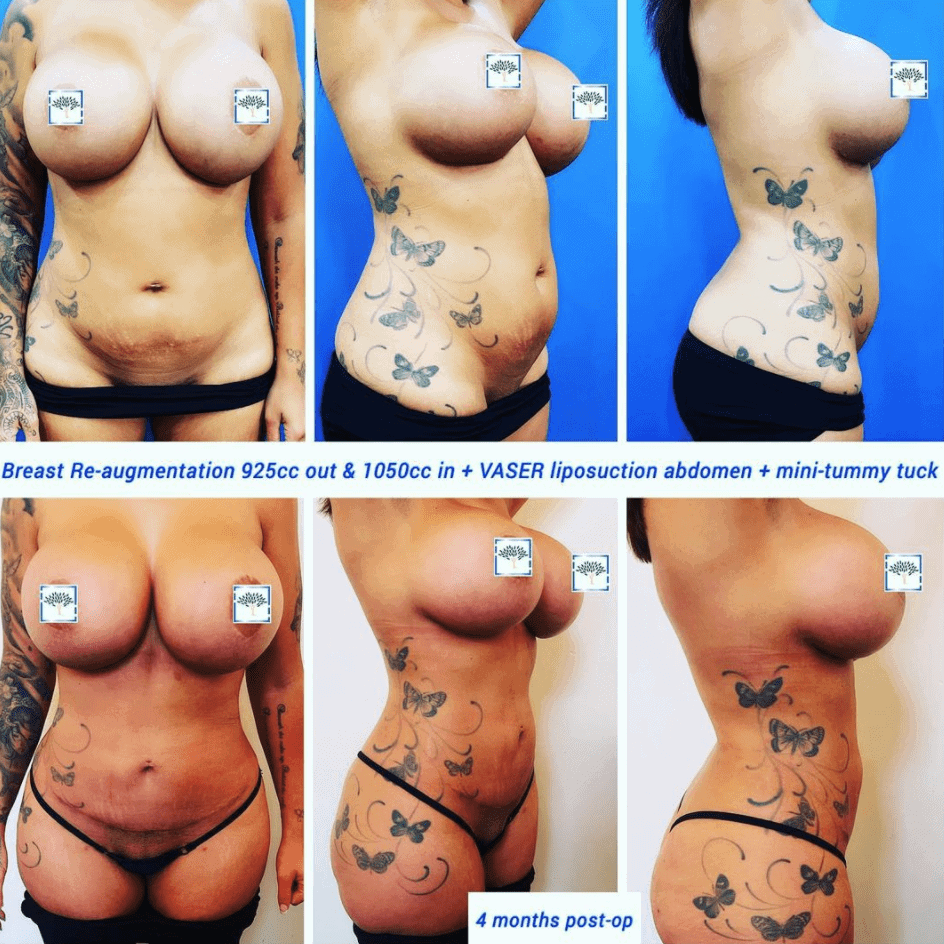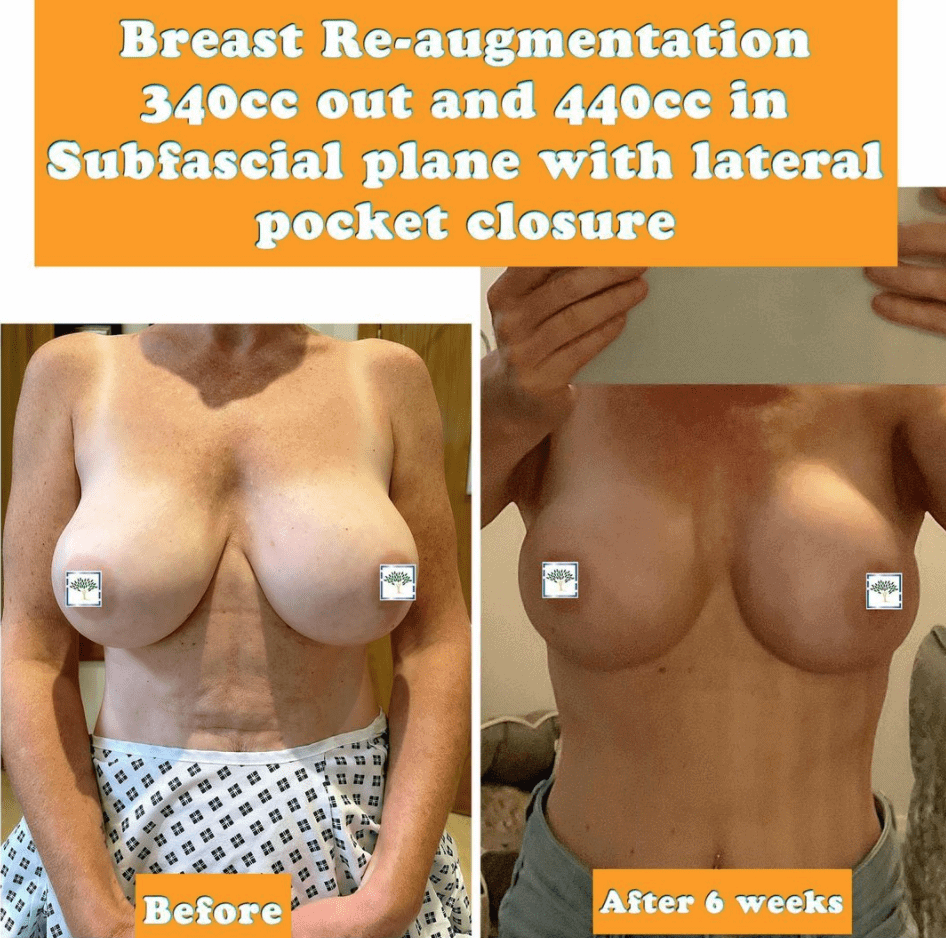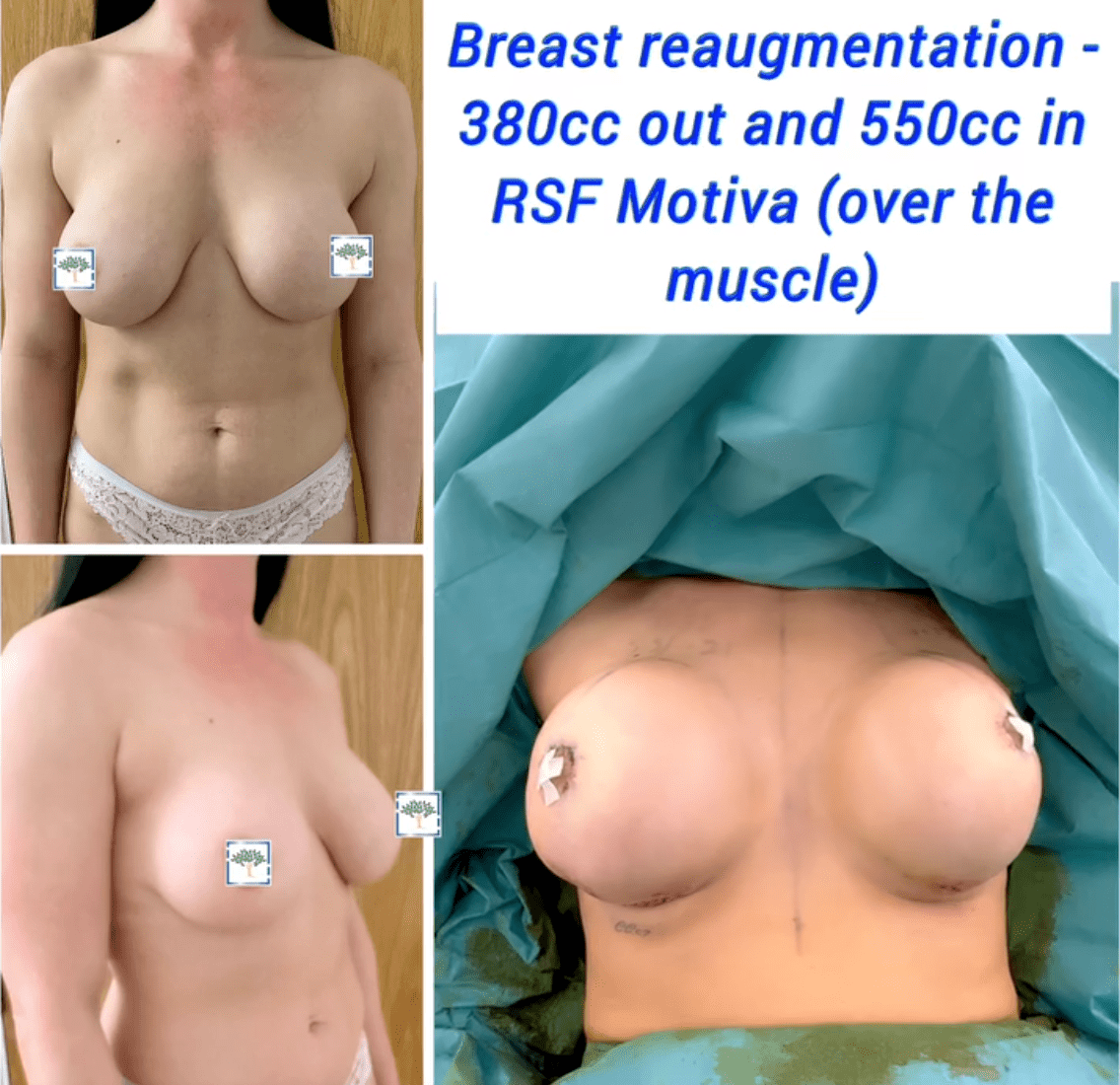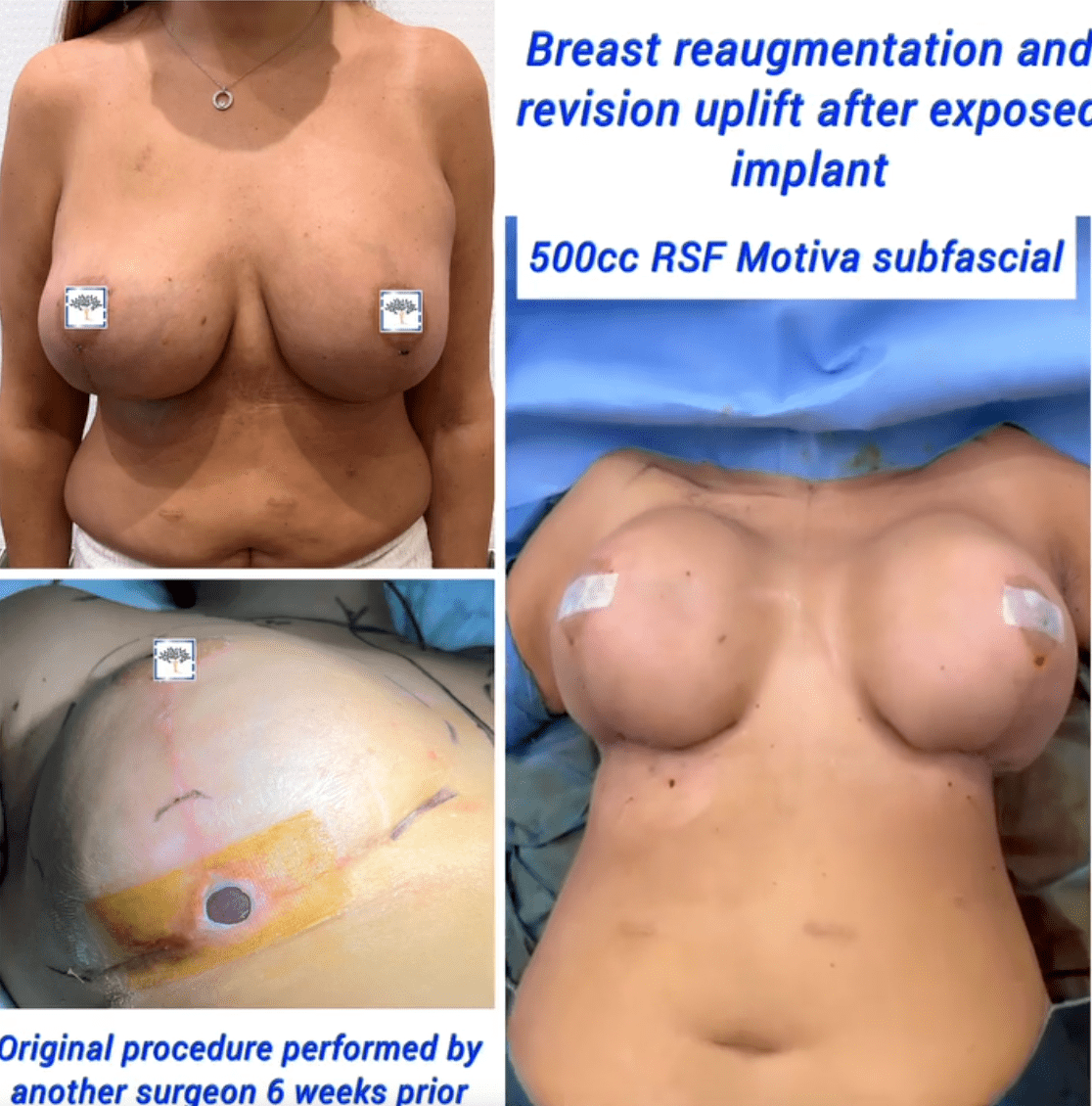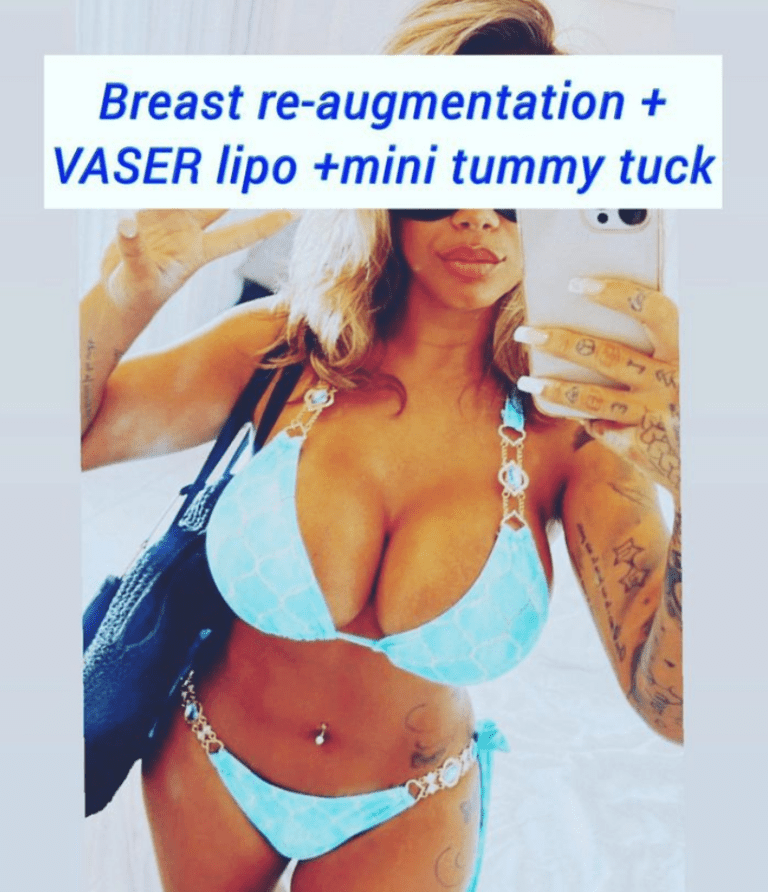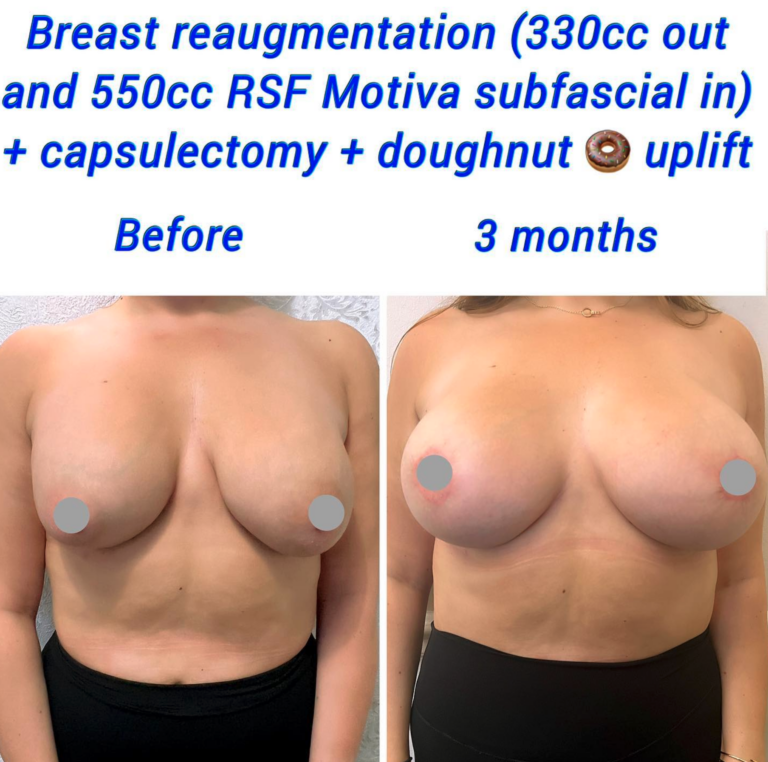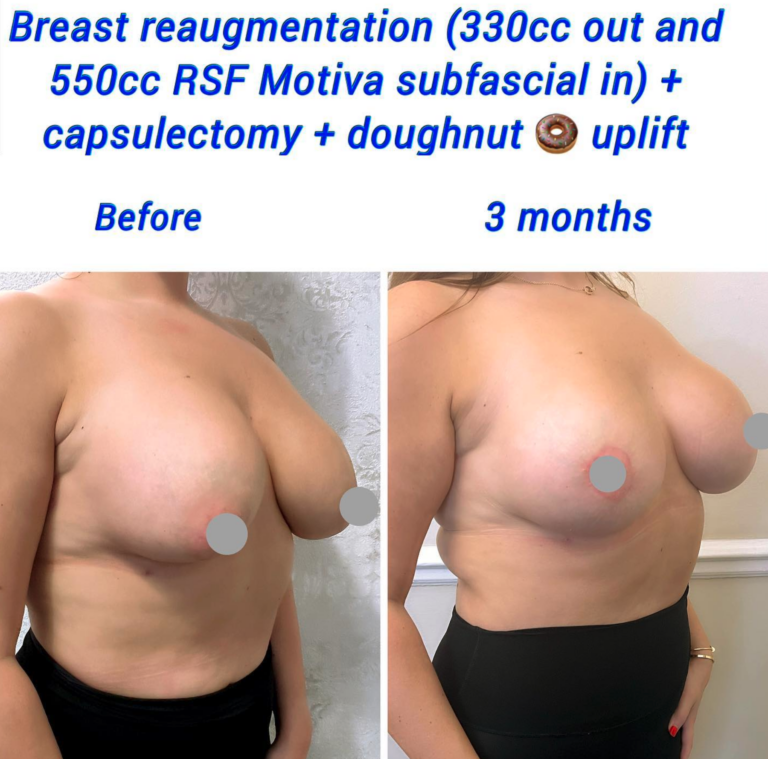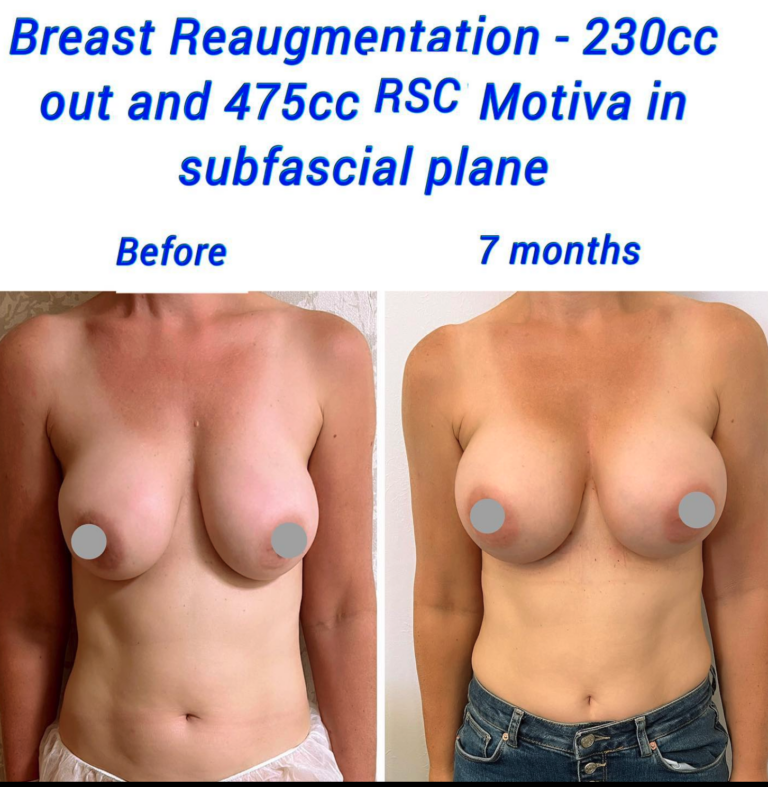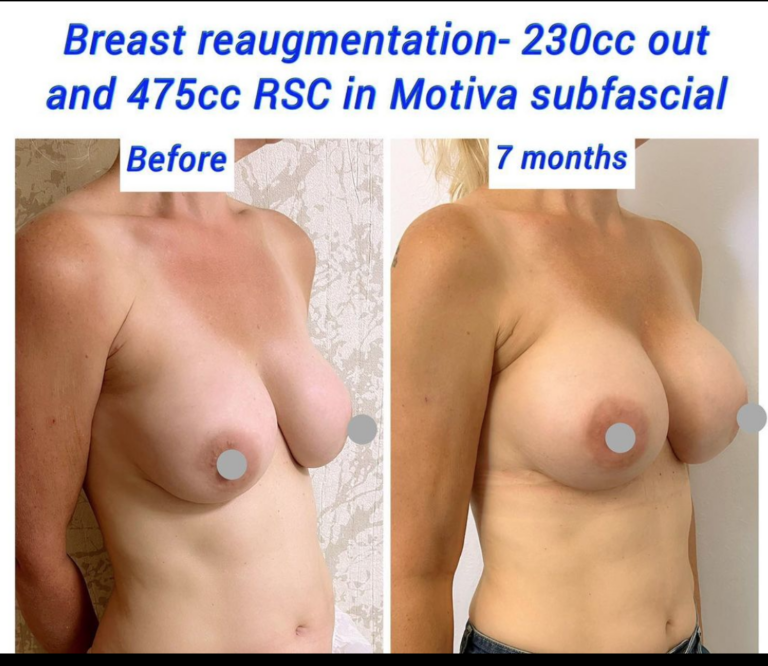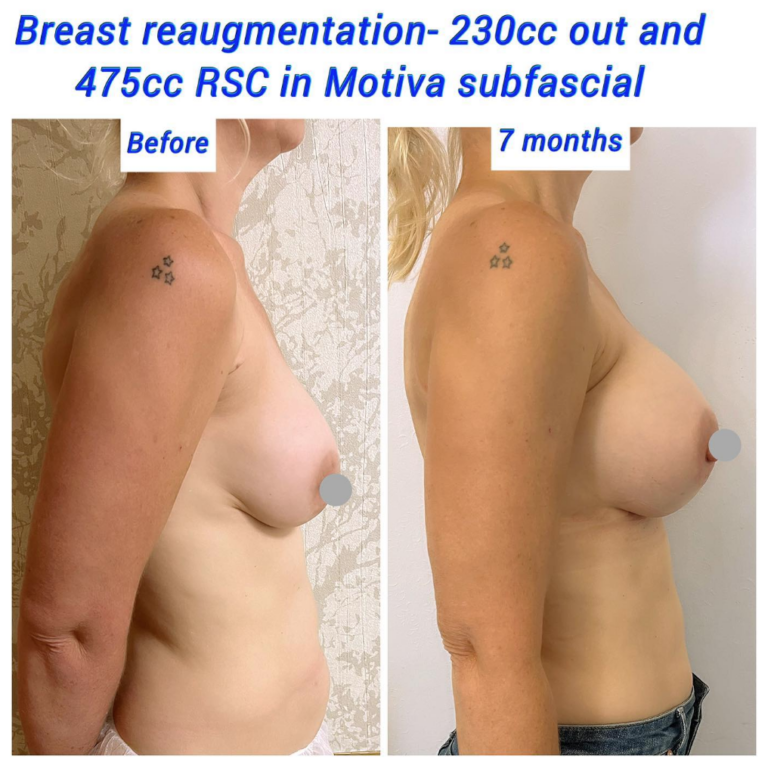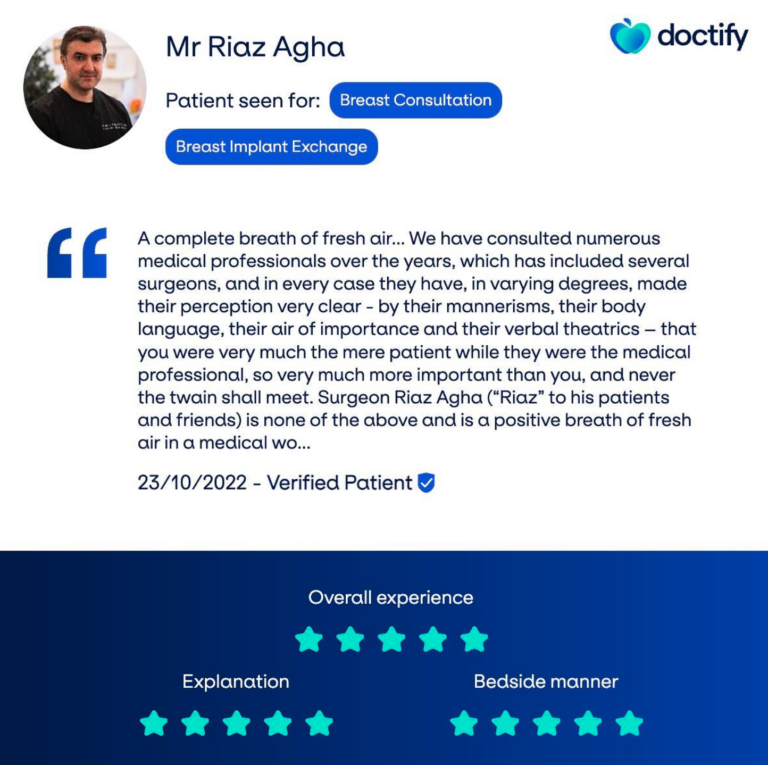Breast re-augmentation involves breast implant removal and replacement with new implants. The highly specialised procedure changes the appearance of a previous breast enlargement procedure.
What is Breast Re-Augmentation?
Breast re-augmentation is often called breast augmentation revision surgery. During the procedure, the plastic surgeon takes out your existing implants and replaces them with new ones. You can replace your implants with others of a different type, size, and shape.
The procedure also helps remove any existing internal scar tissue or an old implant pocket, preparing it for re-augmentation. In most cases, the surgeon performs the procedure through the original incision site. This eliminates the need for additional incisions, which minimises scarring.
Breast Re-Augmentation Revision Surgery: Quick Overview
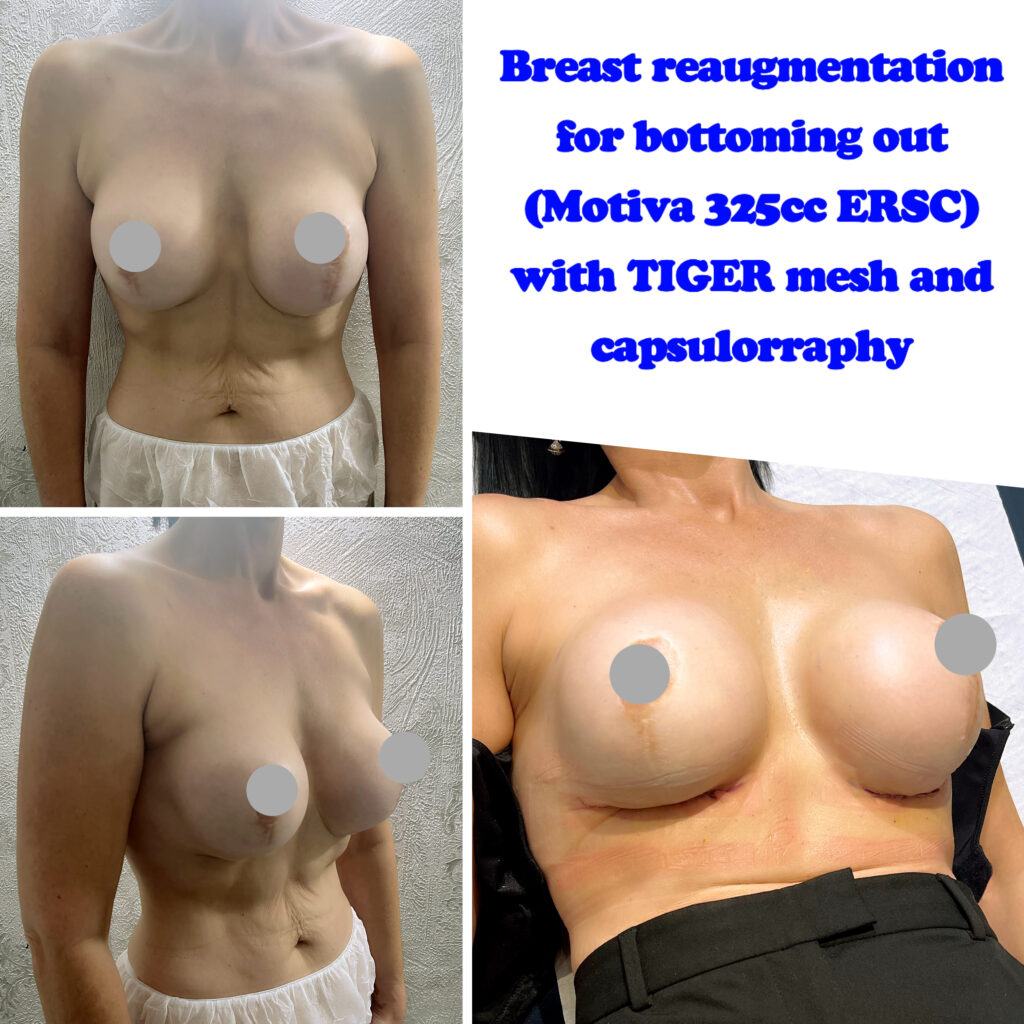
- Surgery Time: 1-3 hours
- Anaesthetic: General
- Hospital Stay: Same-day or 1 night
- Dressing and Garments: Change dressings at 1 week, remove dressings at 2 weeks, up to 12 weeks wearing a compression bra
- Time Off Work: 1-2 weeks
- Exercise: 6 Weeks
- Mobile: 1 day
- Washing: Shower after 1 week
- Sleeping Position: On your back at a 45-degree angle for at least 2 weeks
- Full Recovery: 6-8 weeks
Breast Explant Surgery vs Breast Re-Augmentation
Breast re-augmentation is often confused with breast explant. Breast explant surgery involves a complete breast implant removal without replacing them with new ones. With breast implant removal, your surgeon will remove implants as well as any scar tissue that’s formed around the implants. The goal of re-augmentation is to improve the look of old implants. It’s for the patient’s satisfaction when they are not happy with a previous breast augmentation procedure.
Breast Implant Removal: Why Do You Need Breast Re-Augmentation?
Breast implants have a lifespan of about 10 years, but it’s normal for them to last longer. So, naturally, there will come a time when your implants will need replacing. However, there are several reasons why an individual may opt for breast re-augmentation, including:
- You have had significant changes in your weight.
- Your breasts have changed after pregnancy, breastfeeding or due to ageing.
- You want to change the shape of your breasts.
- You want to change the size of your breast implants.
- Issues with the breast implant like ruptures or leaks.
- You have capsular contracture (severe hard scar tissue).
Because of the increased popularity of breast augmentation, there are many patients going through re-augmentation surgery. The outcome of the procedure varies from one surgeon to another.
Age, pregnancy and breastfeeding can alter the results of breast augmentation over time. So, patient dissatisfaction is common whether it happens immediately or over a period of time. Re-augmentation can help correct undesirable or inadequate results of breast surgery.
How Do You Know if You Need Breast Revision Surgery?
There are both medical and aesthetic reasons why you would want breast re-augmentation. If you’re simply unhappy with the look of your breast implants, you should speak to an expert plastic surgeon to guide you on the next steps.
Signs You May Need Breast Implant Removal
There are certain signs you should watch out for in case you need to remove breast implants for a medical reason, such as:
- Implants are bottoming out.
- Implants are moving and creating a gap between the breasts.
- Implants are hard to touch.
- Rippling or deflated breast implants.
How Does Breast Re-Augmentation Work?
Breast re-augmentation is similar to your initial breast augmentation procedure. It will take longer than your initial surgery as you are both removing the old implants and inserting new ones. Although surgery time is longer than breast enhancement surgery, the recovery time is usually smoother.
Breast Implant Removal and Breast Implant Replacement
The plastic surgeon performs the procedure under general anaesthetic. They then remove the implants from the same incision site as your original procedure. Depending on how your breast tissue is, your surgeon may also remove tissue surrounding the implant.
After your breast re-augmentation procedure, an overnight stay is normally recommended. It’s not a must, but it’s something you should discuss with your plastic surgeon. After the surgery, you will stay in a recovery room where the surgeon will monitor you for a few hours until the anaesthesia effects wear off. Once you get discharged, you will receive instruction on post-operative care to follow to get the best possible outcome.
How Long Does It Take to Recover from Breast Implant Removal and Replacement?
With breast implant removal, you can expect a similar recovery time as your initial breast augmentation surgery. The duration of your recovery will largely depend on the extent of your procedure. You will likely need to wear a compression garment following your surgery to reduce swelling and bruising. The full recovery time takes between 4 to 6 weeks.
Immediately after the surgery, there will be swelling on the upper chest and around the breasts. This should go down after about two weeks. If you’re considering breast re-augmentation because you are unsatisfied with a previous boob job, seek advice first. Circumstances vary from one patient to another, so, your situation might be unique, and the doctor needs to advise on that.
Depending on the condition of your scarring or breast tissue, the plastic surgeon may have to remove parts of the damaged breast. If you had a lot of work done during the re-augmentation surgery, your recovery period would also be longer. Overall, you should expect to make a full recovery in about 6 weeks or so.
What to Expect After Your Second Breast Augmentation Surgery
When Can You See the Results of Breast Re-Augmentation?
It can take several weeks and, in some cases, a couple of months to see the full results of a breast procedure. However, re-augmentation results are visible almost immediately.
Depending on the reason for the revision surgery and the extent of the procedure, you can immediately see a clear difference between your old implants and the new ones.
How Long Do Breast Implants Last?
While most implants last between 10 to 15 years, some patients choose to remove implants before this because of one of the following reasons:
- No longer happy with the size of the implants
- Infection
- Implant complications like ruptures, leaks, or capsular contracture
- Medical necessity i.e. undergoing breast cancer treatment
- Breast Implant Illness symptoms and pain related to the implants
- Tissue death around the implant
- Movement of one or both of the implants
- A buildup of calcium deposits around the breast implants
Breast Implant Replacement: Before and After Breast Re-Augmentation Photos
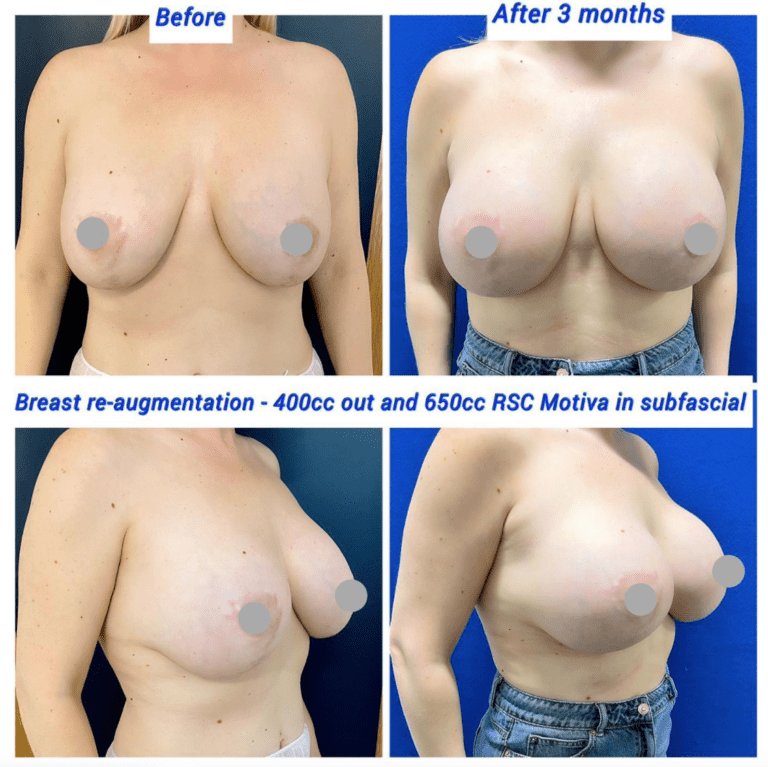
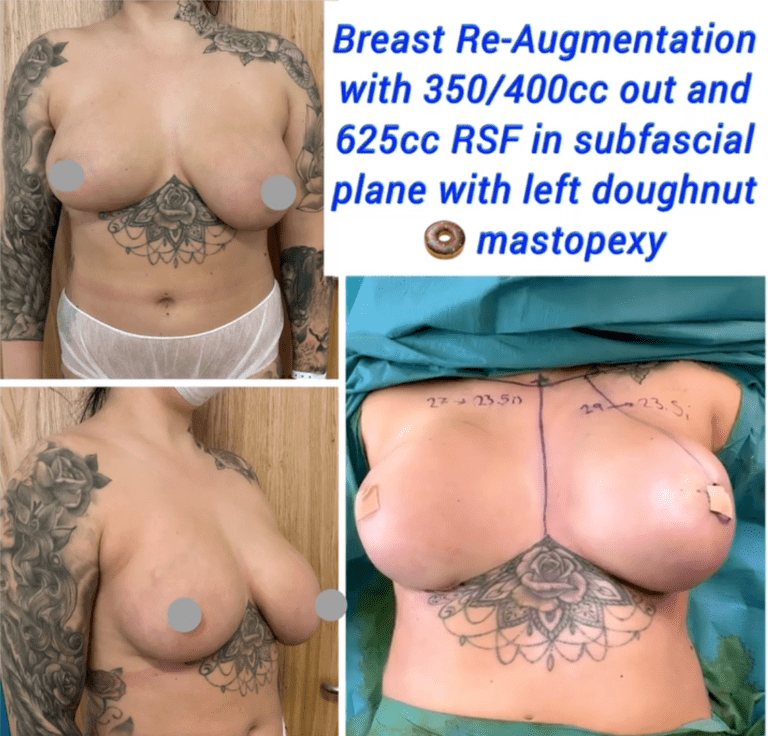
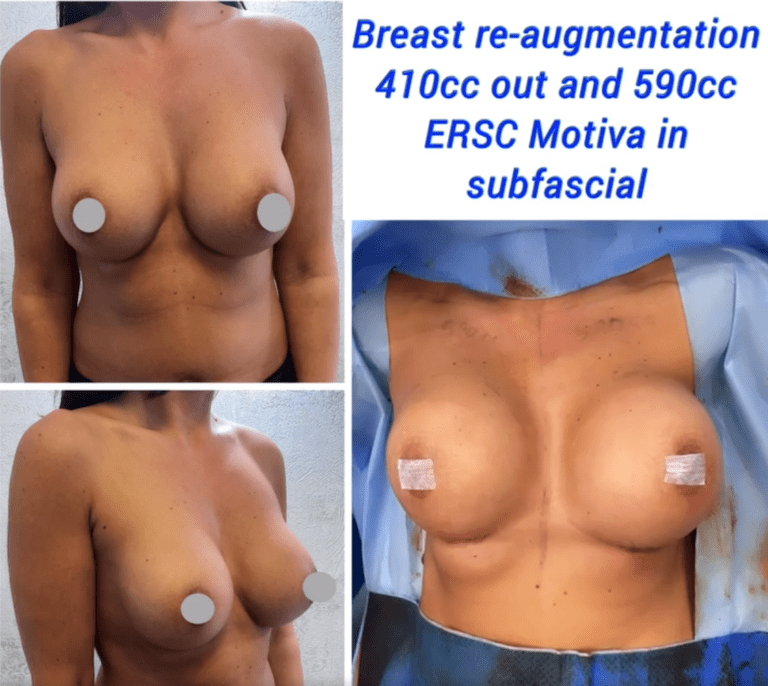
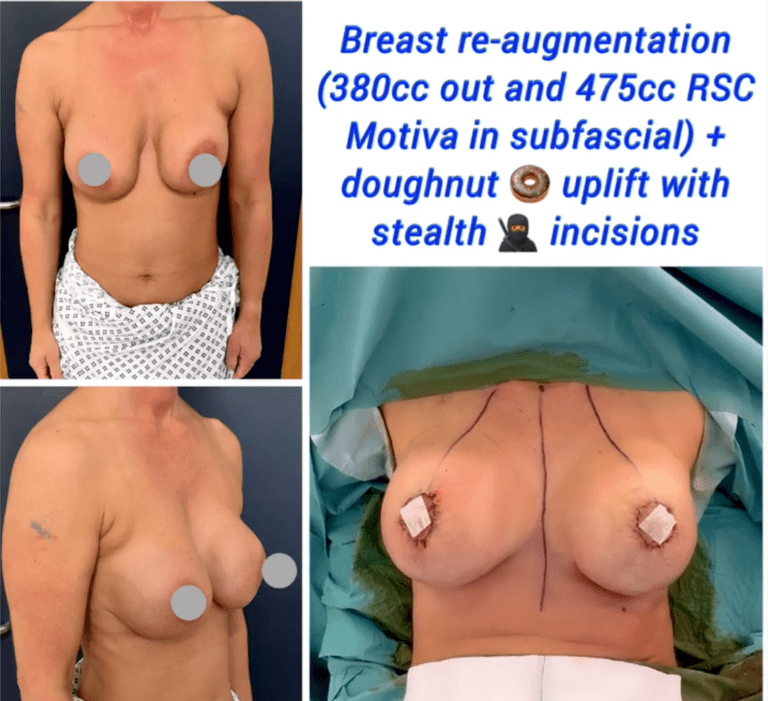
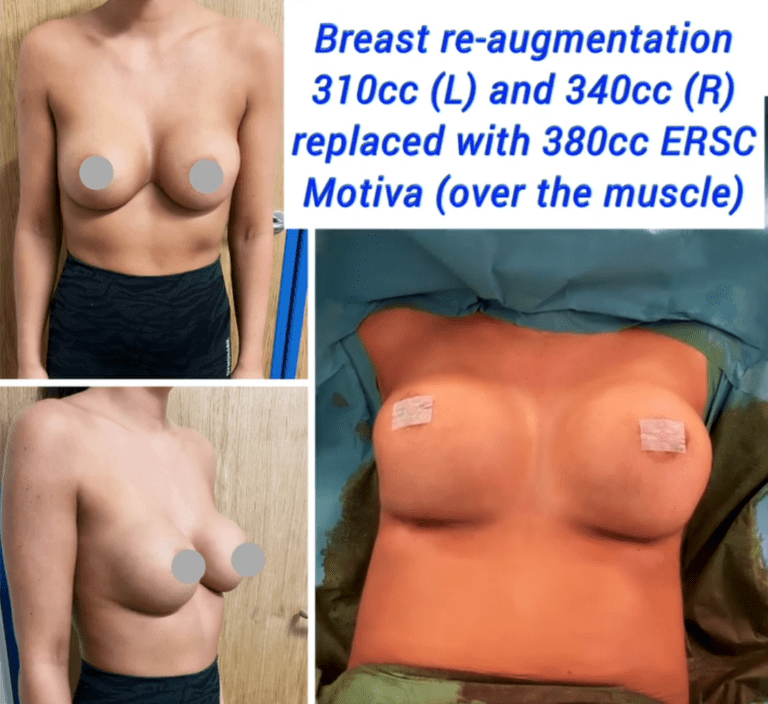
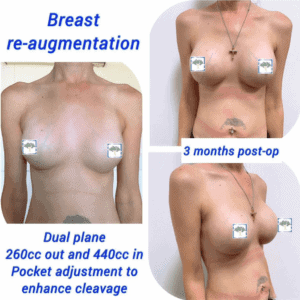


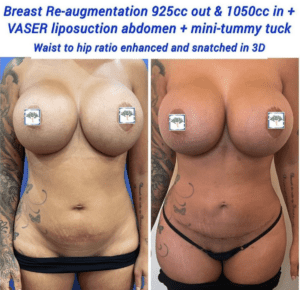


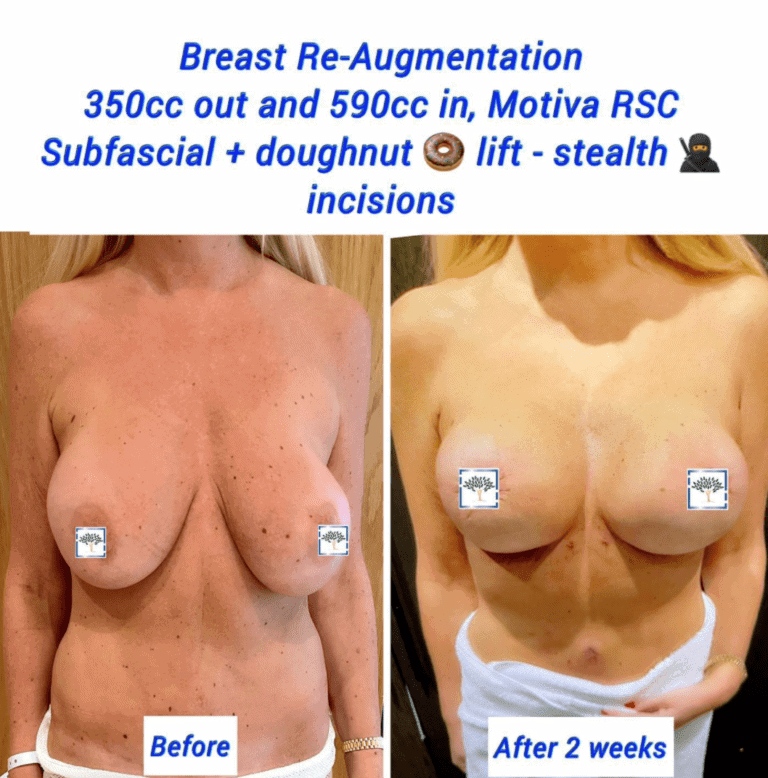
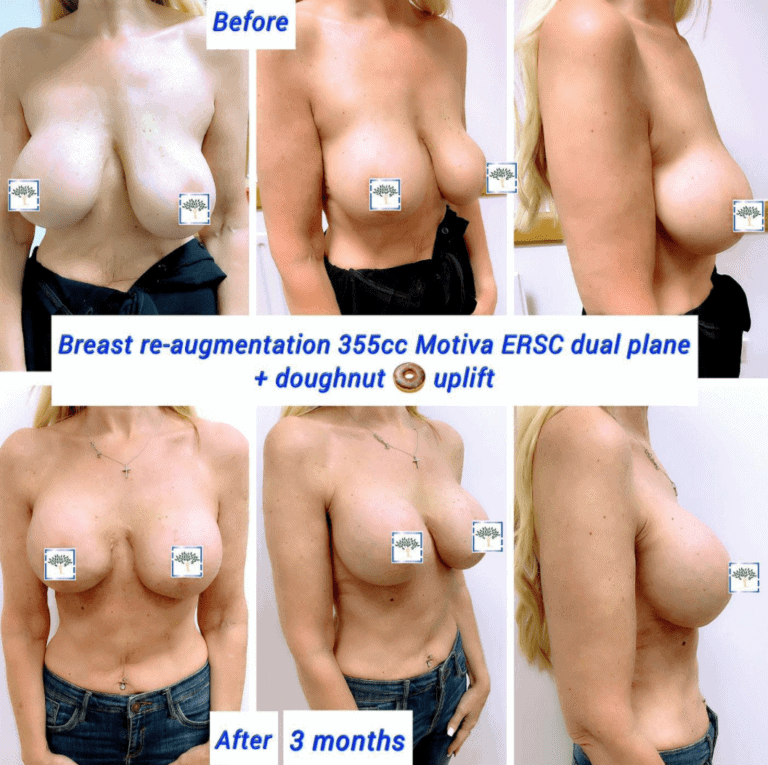
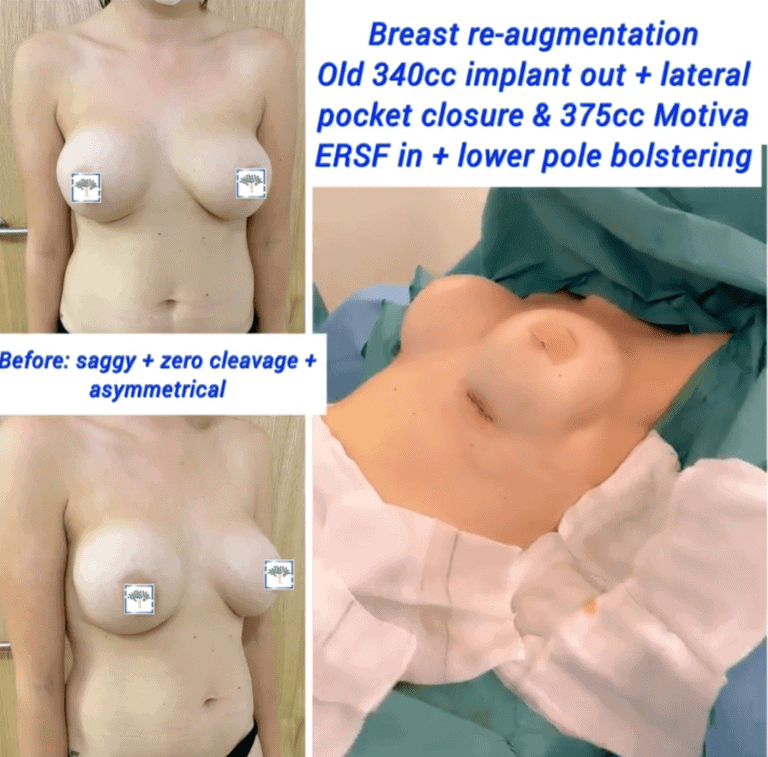
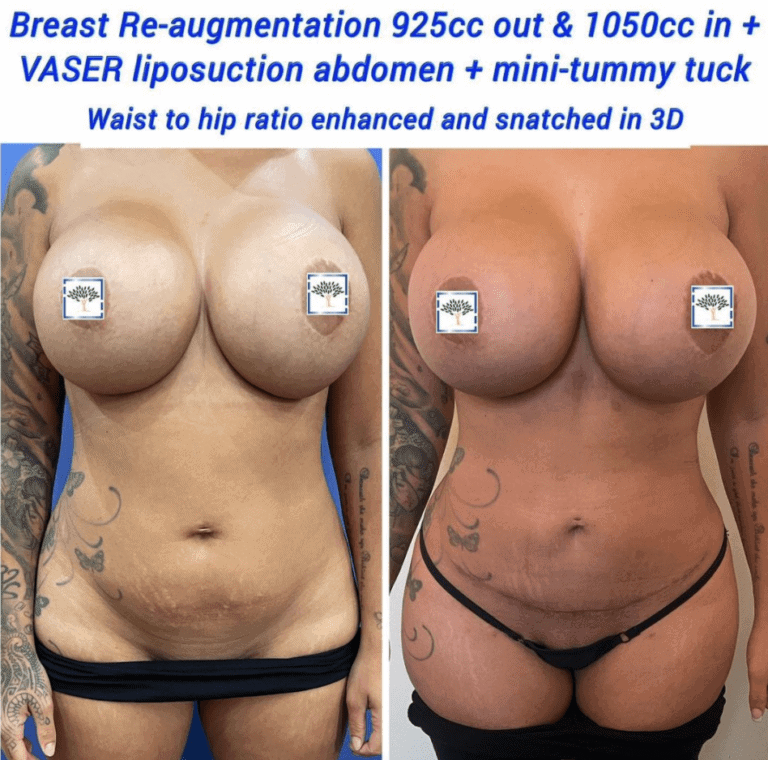
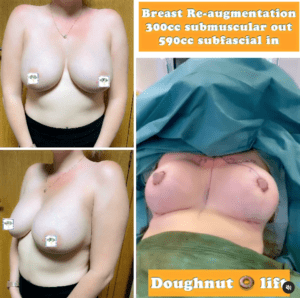
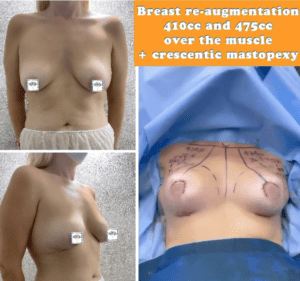
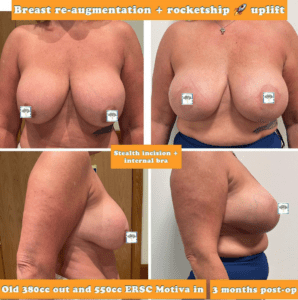

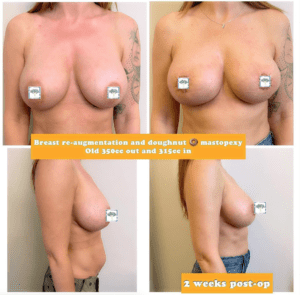

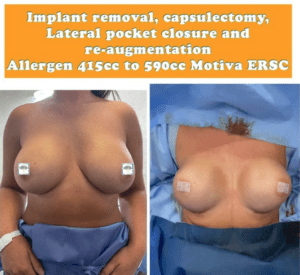
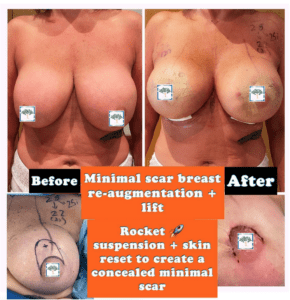
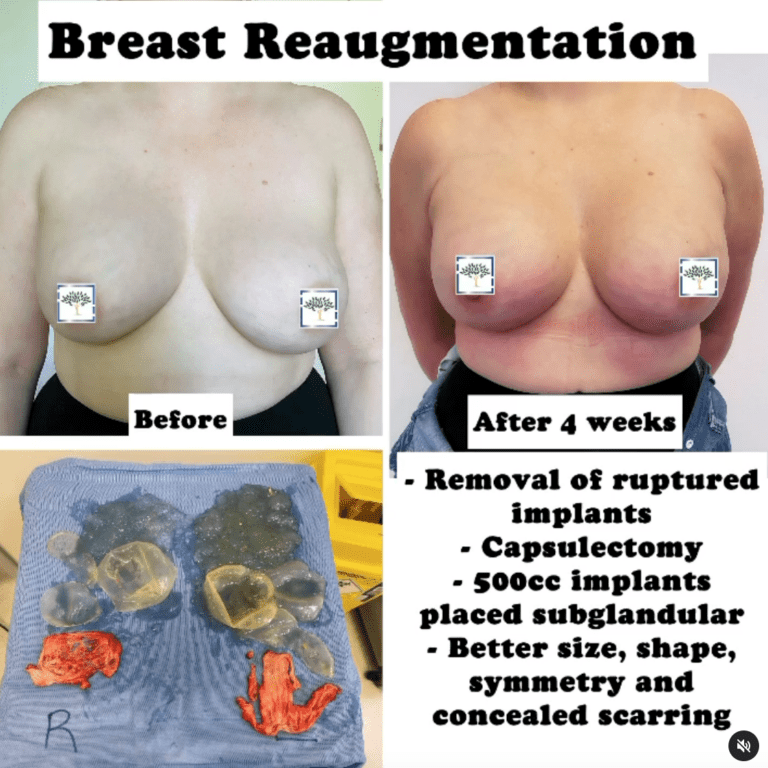
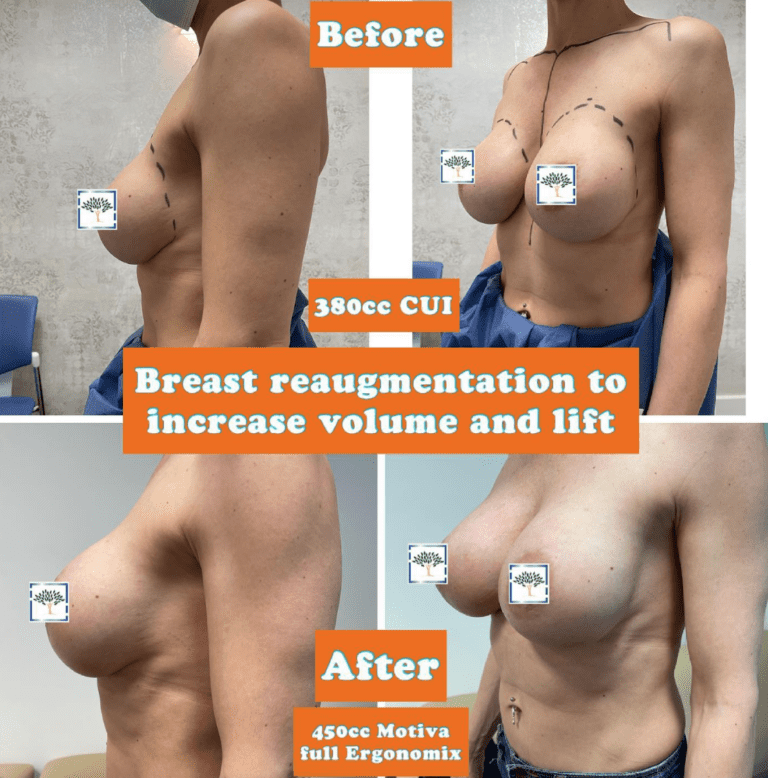

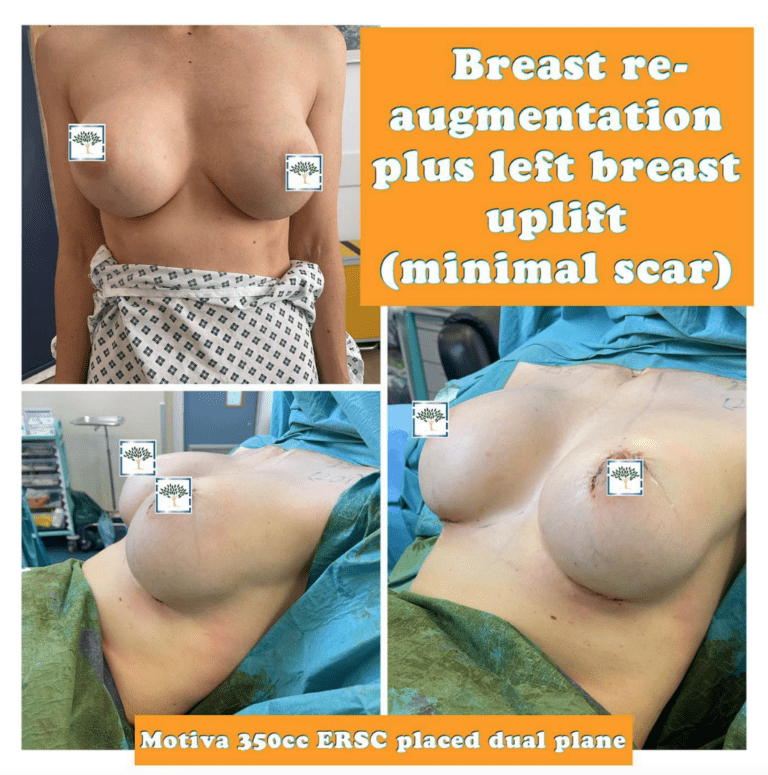

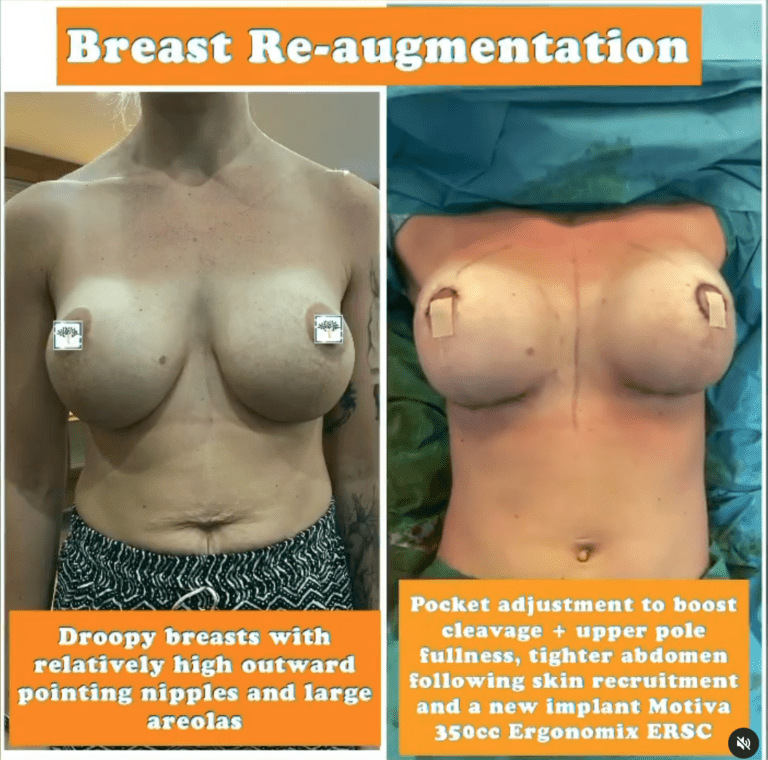

Patient Reviews at The Harley Clinic
Breast Surgery at the Harley Clinic London
What are the Risks and Side Effects of Breast Re-Augmentation Surgery?
As with any surgery, it’s important to be aware of any potential risks and side effects of breast re-augmentation. Potential risks include
- Infection
- Bleeding
- Hematoma
- Anaesthesia risks
- Skin and or fat/necrosis
- Fluid accumulation
- Pain
- Swelling
- Poor wound healing
- Poor scarring
- Nerve injury
- Contour irregularity
- Seroma
- Over/under correction
- Asymmetry
- Damage to other structures
- DVT
- PE
- Chest infection
- Need for further surgery
- Unhappiness with size
- Extrusion
- Weight of the implant and gravity could mean that there’s a need for a breast lift in the future
- Changes in nipple or breast sensation
- Scars
- Loss of nipple or areola
- Infection
- Uneven breast shape or size
- Risks of breast implants include but are not limited to:
- Bottoming out – this refers to a form of breast implant displacement. The implant sinks down to the lower part of the breast area.
- Double bubble – this is a type of implant deformity where the breast tissue descends instead of the implant.
- Animation – excessive movement or distortion when you do activities that involve your chest muscles.
- Wrinkling – this is when you see wrinkling or rippling over the implant.
- Implant rupture (1% per yer) – if a breast implant ruptures, it will start to leak and deflate. Swelling, soreness, and burning sensation are all signs of a breast implant rupture.
- Malposition – when the implant is sitting in the wrong place.
- Asymmetry – this is when your breast implants are uneven.
- Breast Implant-Associated Anaplastic Large Cell Lymphoma – a type of lymphoma that can develop around the breast implants. Lymphoma is a cancer of the lymphatic system. ALCL 1 in 20,000 textured implants sold (MHRA)
- Change in feeling of breasts – the majority of patients experience some change in the feeling of their breasts.
- Capsular contracture
- Extrusion
If you’re unhappy with the outcome of a previous breast augmentation surgery, book a consultation today with a certified Harley Street breast surgeon at the Harley Clinic.
For more information, read our Cosmetic Surgery Blog for the latest plastic surgery and wellness tips and news.
Further Reading:
- Breast Augmentation: Implants vs Fat Transfer
- How to Prepare For Your Cosmetic Treatment
- How Do You Find the Right Bra Size After Breast Augmentation?
- How to Choose Between Breast Augmentations, Lifts, and Reductions
- What is Breast Re-Augmentation?
- 7 Questions to Ask Before Your Breast Augmentation
- Can You Breastfeed After Breast Surgeries?
- How to Prepare for Breast Augmentation Surgery
- Signs You May Need a Breast Implant Replacement












